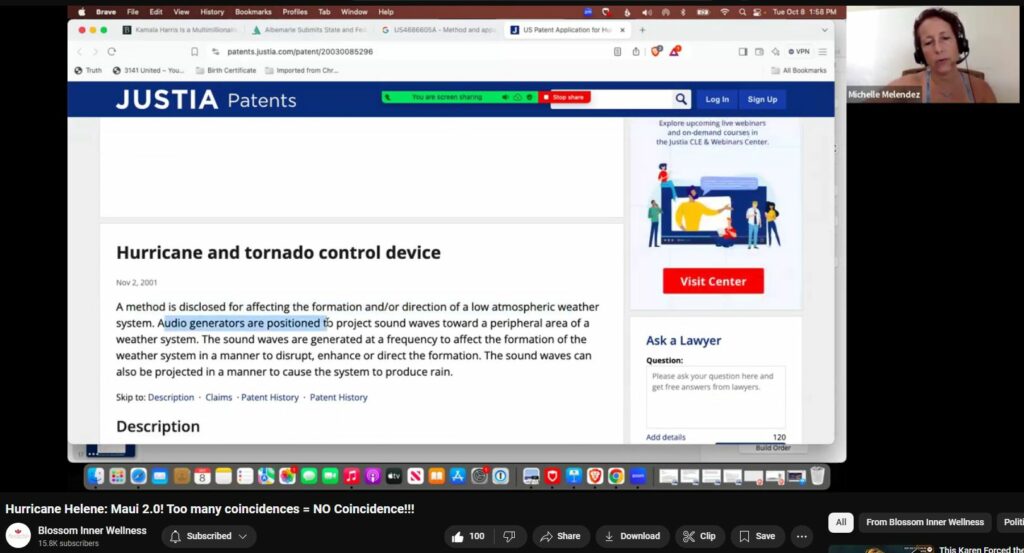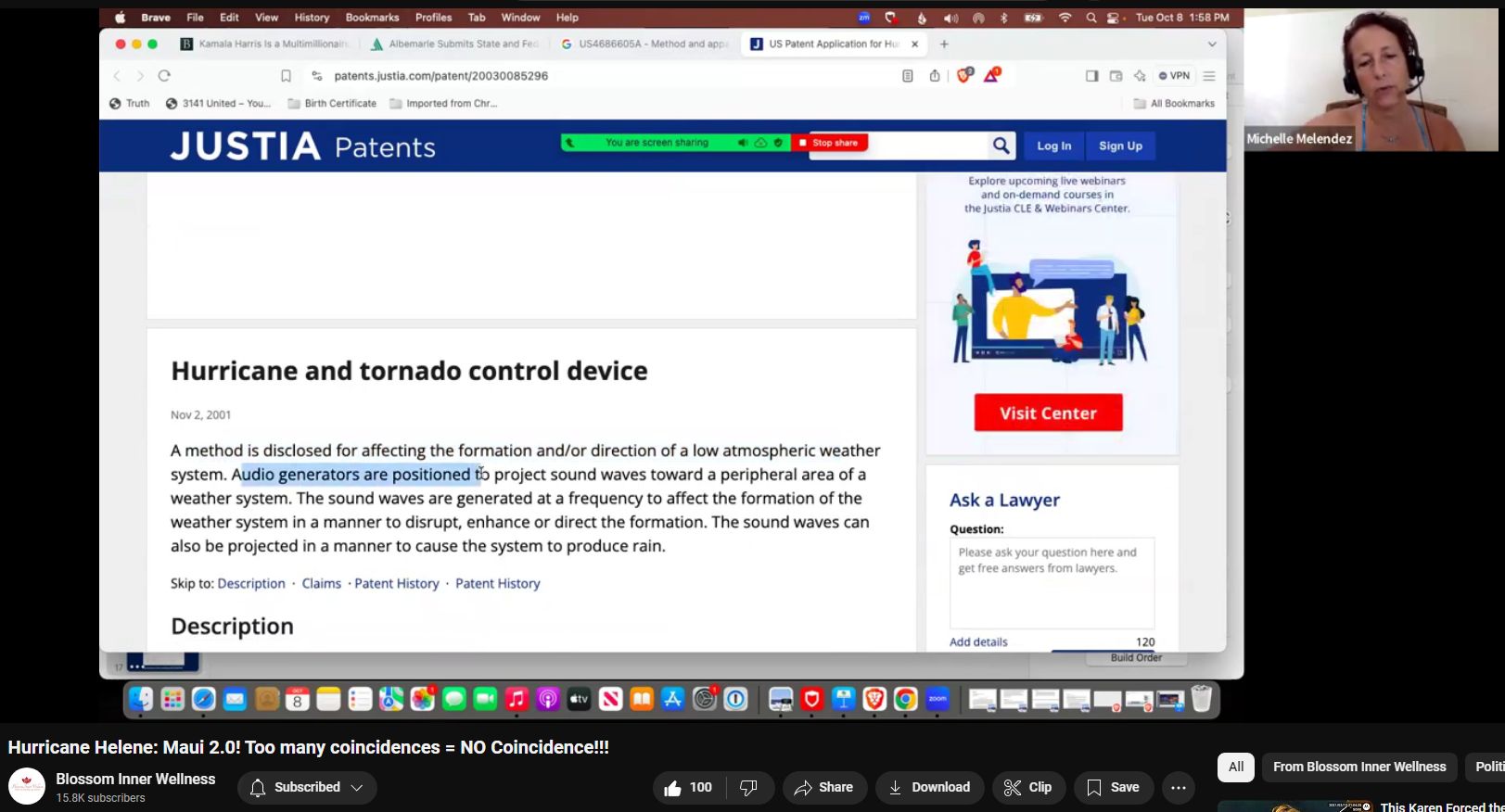Michelle Melendez reveals Patent for Sound Waves to Form and Control Tornadoes Hurricanes Storms and uncovers much more

https://kagi.com/search?q=usaf%2C+”owning+the+weather+by+2025″+weather+as+force+multiplier%2C
https://rumble.com/v4mez5b-owning-the-weather-by-2025-us-military-and-weather-modification.html
WEATHER AS A FORCE MULTIPLIER: OWNING THE WEATHER IN 2025
MILITARY APPLICATIONS OF WEATHER MODIFICATION
In 2025 US aerospace forces can “own the weather” by capitalizing on emerging technologies and focusing development of those technologies to war fighting applications. Such a capability offers the war fighter tools to shape the battle space in ways never before possible. It provides opportunities to impact operations across the full spectrum of conflict and is pertinent to all possible futures. The purpose of this paper is to outline a strategy for the use of a future weather modification system to achieve military objectives rather than to provide a detailed technical road map.
A high risk/high reward endeavor, weather modification offers a dilemma not unlike the splitting of the atom. While some segments of society will always be reluctant to examine controversial issues such as weather modification, the tremendous military capabilities that could result from this field are ignored at our own peril. From enhancing friendly operations or disrupting those of the enemy via small-scale tailoring of natural weather patterns, to complete dominance of global communications and counter-space control, weather modification offers the war fighter a wide range of possible options to defeat or coerce an adversary.
Technology advancements in five major areas are necessary for an integrated weather modification capability: (1) advanced nonlinear modeling techniques, (2) computational capability, (3) information gathering and transmission, (4) a global sensor array, and (5) weather intervention techniques. Some intervention tools exist today and others may be developed and refined in the future.
Current technologies which will mature over the next thirty years will offer anyone who has the necessary resources the ability to modify weather patterns and their corresponding effects, at least on the local scale. Current demographic, economic, and environmental trends will create global stresses that provide the impetus necessary for many countries or groups to turn this weather modification ability into a capability. In the US, weather modification will likely become a part of national security policy with both domestic and international applications. Our government will pursue such a policy, depending on its interests, at various levels. These levels could include: unilateral actions, participation in a security framework such as NATO, membership in an international organization such as the UN, or participation in a coalition. Assuming that in 2025 our national security strategy includes weather modification, its use in our national military strategy will naturally follow. Besides the significant benefits an operational capability would provide, another motivation to pursue weather modification is to deter and counter potential adversaries.
In this paper we show that appropriate application of weather modification can provide battle space dominance to a degree never before imagined. In the future, such operations will enhance air and space superiority and provide new options for battle space shaping and battle space awareness. “The technology is there, waiting for us to pull it all together;” in 2025 we can “Own the Weather.”
A RESEARCH PAPER PRESENTED TO AIR FORCE 2025
2025 is a study designed to comply with a directive from the chief of staff of the Air Force to examine the concepts, capabilities, and technologies the United States will require to remain the dominant air and space force in the future. Presented on 17 June 1996, this report was produced in the Department of Defense school environment of academic freedom and in the interest of advancing concepts related to national defense. The views expressed in this report are those of the authors and do not reflect the official policy or position of the United States Air Force, Department of Defense, or the United States government.
This report contains fictional representations of future situations/scenarios. Any similarities to real people or events, other than those specifically cited, are unintentional and are for purposes of illustration only.
This publication has been reviewed by security and policy review authorities, is unclassified, and is cleared for public release.
